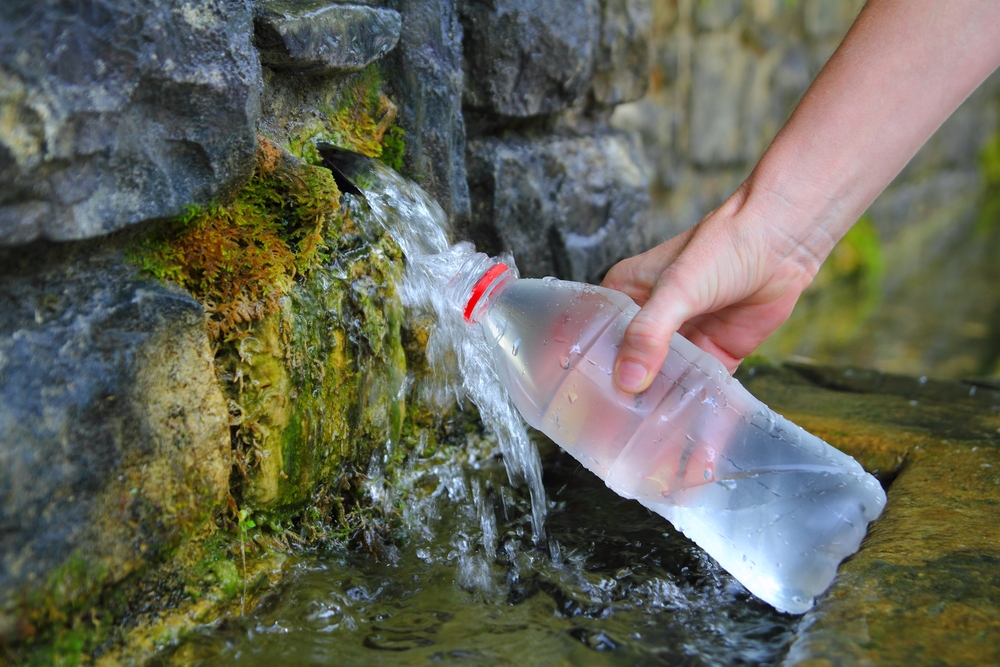The chances of finding water in the mountains are pretty much possible. We all know that whenever we go hiking or camping, we must pass by a tiny water spring that flows by the stones.
Knowing where and how to find water in the mountains is important if you are on an existential mission. Check and inspect the water source. Never drink from suspicious water basins; consider filtering the water to avoid bacteria and virus consumption. So, if you want to learn more, I have included everything below!

How to Find Water in the Mountains
There are three things you should follow to find water in the mountain. First, go downhill. Second, search for hidden basins and look for green. Third, follow the animals and their step marks. These three signs will bring you to the water source: a spring, river, or accumulated rainwater basin.
You also have multiple available methods to find and collect water in case you do not find a spring or river, even if you have been searching for it for days. You should know how to filter if you opt for collecting water from the rain or melting snow.
Make a filter out of available materials you can find in the woods, and boil the collected water to eliminate all possible bacteria and traces that might be dangerous for your system.
Lake and pond water is not so safe for consumption. You should also filter and boil this water if you don’t want to get sick besides dehydration.
Consider the natural signs pointing to a possible water source because not all kinds of water are visible. You can also collect water from underground steam if you know how to find an underground steam bed. Moreover, I have included two ways for you, so let’s see!
Ways to Find Water Sources in the Mountains
There are two ways how to find water in the mountains. The first option is to find an existing water source like a river, spring, or lake. The second option is to collect water from the rain and plants or melt snow.
Every water drop is important if your water supplies start lacking. Staying dehydrated in the woods might lead to many health issues, like mountain sickness, hypothermia, or sunstroke.
When searching for water in the mountains, knowing which water is drinkable and which one to avoid is important.
Also, it is essential to carry some survival tools and water containers to collect and store the water. Here are some helpful tips that I find important, which might help you get to the water source in the mountains.
Follow the gravity
Heading downhill is the first thing you should do when searching for water in the mountains. Water flows down, and the chances of finding water as you head down are more likely than if you go up.
Going down is also good for you because you will not get tired and thirsty. Look around as you head down. Is there any canyon or a valley likely to pass through?
Stop for a while and use your hearing sense. Is there any sound of running water? You can hear running water in the mountains even if you are far away from it.
However, finding running water in the mountains might be hard and depends on your location. At some heights, the water is not visible and is often underground. To find the underground water, you should find a sign pointing to water flow underneath the ground and start digging a few steps deep.
If you are lucky and find running water (spring, river), you can collect it in containers and remember the location for future refills. Also, it might be good to follow its flow because it can get out of the mountain faster.
Read more: How to Find a Spring in the Woods
Search for green plants
Searching for green plants might be a good sign of water nearby. Greens will also help you mark a spot where underground water flows.
All plants need water and usually grow green where water is. Finding green plants is an indicator of a watercourse. Even if it is dry at the moment, it is best to follow it because it might pop on the surface as you head lower and lower.
If you are on the rocky side of the mountain, green plants in the only area might indicate a popping spring.
Following wildlife signs might also be an indicator of water. All animals know where the water flows since the mountains are their home.
Many bears, insects, and birds live closer to springs and other water sources, which is good news for you if you are searching for water in the wild.
Spotting animal footsteps might be hard in some areas, which is why you should search for other animal signs. For example, you can get guided by animal feces. Follow the direction of feces because animals often get down for water, too.
Insects and mosquitoes are also excellent signs that there is moisture nearby. Mosquitos often breed on slow-moving or standing water. Bees often live 3 to 5 miles away from a water source, so finding a hive might be a good sign of water nearby.
If you notice a hive on a tree, try to climb on that tree and focus on locating dense green plants and trees.
Collect the rainwater
If you can not find a spring or pond around, it might be best to collect the rainwater. Rainwater might be the best and safest option in the mountains because it does not carry a risk of bacterial infections.
There are multiple primary methods of collecting rainwater. Initially, you will need containers and water-resistant fabric.
The first way is to place the containers outside and wait until they fill up with rainwater. If the collected water looks dirty and suspicious, filter it with a DIY charcoal filter.
You should get a waterproof fabric, a poncho, or a bigger plastic bag to increase the rainwater amount. Tie the poncho around trees until it looks like a four-side hammock. Place a stone on one side to create a depression and allow the water to flow in the container below.
Also read: How Long Can You Survive With Only Water
Conclusion
I hope these methods have helped you learn how to find water in the mountains, which I find really helpful.
Water is an essential existential supply, so try to save it and focus on the natural signs that point to a water supply in the wild.
